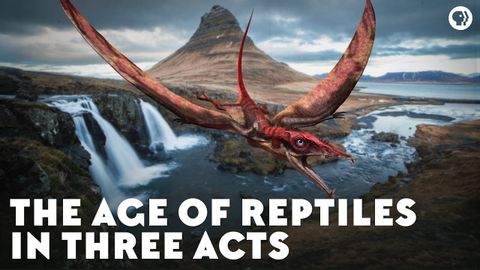
Subtitles & vocabulary
The Age of Reptiles in Three Acts
00
joey joey posted on 2021/04/30Save
Video vocabulary
period
US /ˈpɪriəd/
・
UK /ˈpɪəriəd/
- Noun (Countable/Uncountable)
- Set amount of time during which events take place
- A way to emphasize what you will say
A1TOEIC
More ancient
US /ˈenʃənt/
・
UK /'eɪnʃənt/
- Adjective
- Very old; having lived a very long time ago
- Relating to a period in history, especially in the distant past.
- Noun
- A person who lived in ancient times.
A2
More common
US /ˈkɑmən/
・
UK /'kɒmən/
- Noun (Countable/Uncountable)
- Area in a city or town that is open to everyone
- Field near a village owned by the local community
- Adjective
- Shared; Belonging to or used by everyone
- Typical, normal; not unusual
A1
More acquire
US /əˈkwaɪr/
・
UK /ə'kwaɪə(r)/
- Transitive Verb
- To get or earn something by thinking or working
- To develop or learn a skill, habit, or quality.
A2TOEIC
More Use Energy
Unlock All Vocabulary
Unlock pronunciation, explanations, and filters
